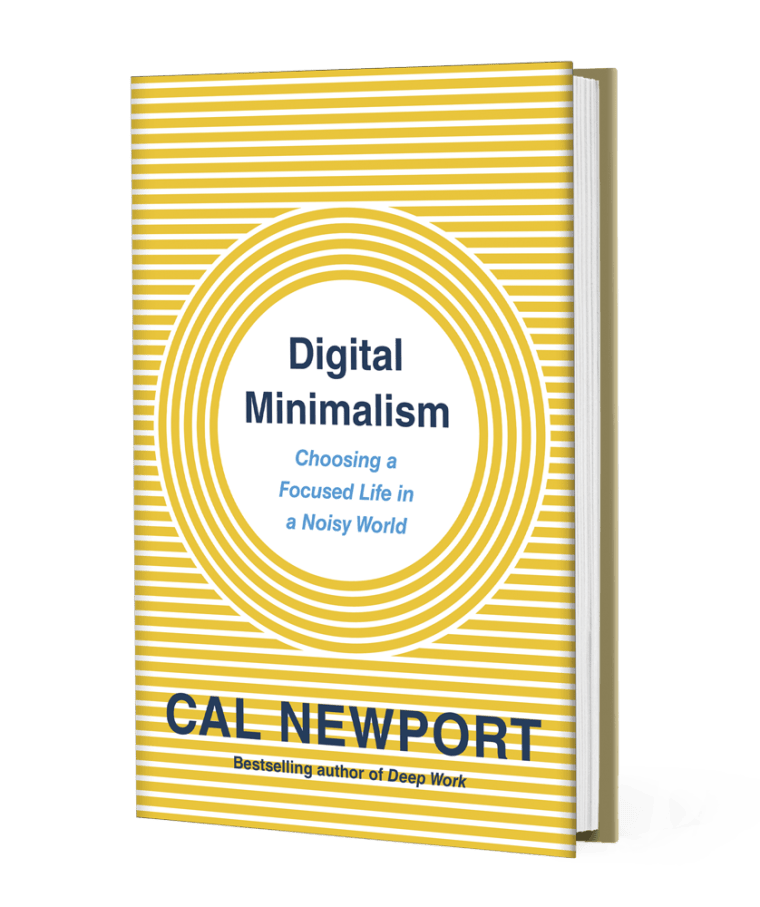You’re following all the advice on simplifying your digital life. You turned off notifications. You bought an old-school alarm clock and banished your phone from your bedroom. You programmed your do-not-disturb hours so only your closest contacts get through after hours.
And yet, that shiny little box grabs your attention, again and again and again. Did anyone like your Instagram photo? Are we supposed to get snow this week? Who’s in for Friday night happy hour?

Cal Newport, author of "Digital Minimalism: Choosing a Focused Life in a Noisy World", argues that small, gradual changes aren’t powerful enough to break the hold our devices have on us.
“You need something much stronger. You need a philosophy of technology use based on the values you believe in,” he says. “You need a consistent way of dealing with technology.”
His solution? A 30-day digital declutter.
STEP 1: FOR 30 DAYS, USE ONLY THE TECHNOLOGY YOU TRULY NEED
Set aside 30 days where you cut your technology use to only what you need to maintain your personal life and professional success.
That use will look different for everyone, but with a little introspection and honesty you should be able to identify what can stay and what needs to go.
That Facebook group where you learn what your book club is reading next, and where you’re meeting? Probably OK. Scrolling through Facebook mindlessly because you’re in line at the grocery store? Nope.
The text that your son needs a ride home? Of course. The group text that spun out of control after someone shared the AOC dancing meme? Mute it.
STEP 2: RECONNECT WITH ACTIVITIES YOU USED TO ENJOY
When Newport tested his digital declutter with 1,600 volunteers, many of them got back into reading, knitting, sports leagues like ultimate Frisbee and basketball, community groups, woodworking, writing poetry, and creating art.
“A lot of people were surprised to discover how much digital technology had pushed analog activities out. They were really excited to rediscover how much they enjoyed going to the library and coming home with a stack of books,” he says. “High-quality leisure is a really big upgrade over low-quality digital streams.”
High-quality leisure is a really big upgrade over low-quality digital streams.
He says that this transition tends to be easier for older people than for younger people. That’s because older people have histories with these activities. They didn’t have a digital life as children or young adults.
A lot of younger people have always been immersed in the digital life, so without their technology they are left with a void. They have to experiment to figure out what offline activities they enjoy.
STEP 3: DECIDE WHICH DIGITAL ACTIVITIES DESERVE A CHUNK OF YOUR TIME
Think about how and when you will use technology, based on your own values. Do you need to scroll through Facebook so your college roommate knows you “liked” the photo of her baby? Maybe you could call her. Or maybe you could plan a visit with her and her baby.
Here are some ways people have focused their technology use to the activities they value while eliminating the mindless scrolling and browsing:
- Digital artists cut their Instagram feed to a small number of artists they admire and schedule a regular time to view their work.
- People in community-based Facebook groups bookmark the group page so they can jump straight to that group’s posts and activities without scrolling through their whole Facebook feed.
- People who find the news triggers anxiety check headlines just once a day, or less often, or listen to the news on NPR for a short time.
- Social media addicts delete the apps from their phones and only check their feeds from their computers.
- People who check their phones during the night give themselves phone curfews, putting their phones away from, say, 9 p.m. to 7 a.m.
- One woman bought herself a watch, after she realized that she often turned to her phone simply to check the time, then got sucked in to various sites and apps.
START FROM SCRATCH WITH THIS DIGITAL DECLUTTER
Newport notes that a lot of people struggle with this challenge. He says those who succeed see it as a declutter, rather than a detox. “If you treat it like a detox, cleanse, or break you’ll almost certainly slide back. Detox isn’t useful without a systematic plan for change,” Newport says.
If you see the 30 days as a break, it gets hard to keep up your motivation. If you plan to go back to your old habits, why take a break at all?
“It’s like decluttering a house. You don’t just randomly throw out stuff. You take everything out and then see what you need. You clear everything out, and build it back up from scratch,” Newport says.
MORE DE-CLUTTERING & CLEANING TIPS
- How often you should clean your home, according to science
- The best spring cleaning products, according to the pros
- Why the 20/10 method can change the way you clean
- How often to replace everything in your bathroom, bedroom and kitchen
Want more tips like these? NBC News BETTER is obsessed with finding easier, healthier and smarter ways to live. Sign up for our newsletter and follow us on Facebook, Twitter and Instagram



